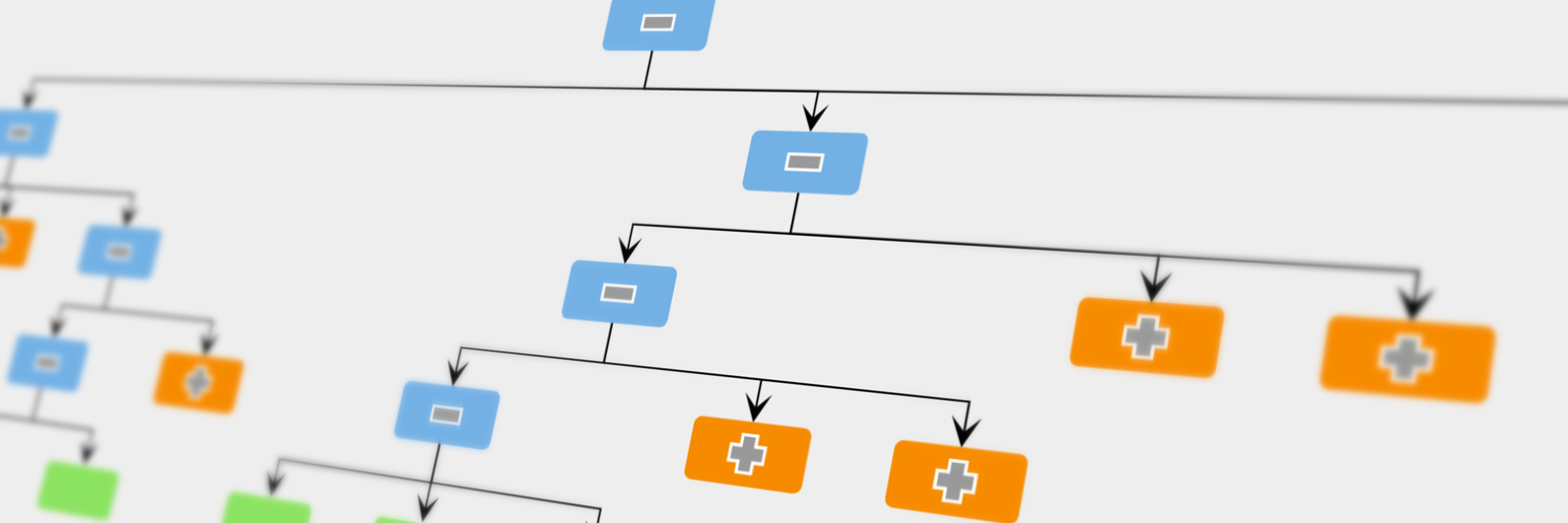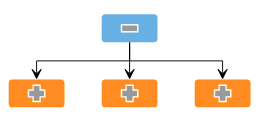Collapsing Subtrees in Diagrams
Learn how to improve the readability of tree-like diagrams by expanding or collapsing subtrees
When visualizing a large set of data, it is a common problem to keep the data readable and easy to comprehend. Bigger diagrams often suffer from higher complexity, which generally makes them hard to grasp. When dealing with big data sets, most of the time, only a small part of the diagram is of interest.
One widely used technique is to hide parts of the data and show them only on demand. This so-called drill-down approach reduces the diagram to the relevant elements and removes unnecessary visual clutter.
For the case of trees or tree-like data, it is obvious to expand and collapse subtrees while exploring the graph. This powerful technique can be applied to navigate massive datasets. Starting from specific entities, the user can explore the data step-by-step by expanding an element for its connected neighbors.
Challenges of the Drill-down Approach
The drill-down approach helps the viewer concentrate only on a specific subtree of a tree diagram. However, some guidelines have to be followed to avoid disturbing the user’s mental map when elements expand or collapse. More precisely, these operations should only affect the particular area of the diagram to which the expanded or collapsed subtrees belong. The remaining diagram should be modified as little as possible. In the expand case, the layout algorithm that determines the positions of the graph elements should ensure that it only provides the required space. In the collapse case, it should eliminate the free space caused by a collapse operation without altering the positions of the remaining elements.
However, designing algorithms for the drill-down approach is not trivial. Complete diagram solutions can help with that. yFiles is a commercial diagramming library that provides all the necessary tools to develop applications that can create, visualize, and automatically arrange the elements of a diagram. It has built-in support for grouping and merging of elements, and it fully supports collapsing and expanding of graph elements. In particular, for tree structures, it provides automatic layout algorithms for arranging the graph elements with several different strategies while it also allows the insertion of new elements into an existing diagram without re-arranging the remaining parts of the diagram.
Explore a Diagram Using the Drill-down Approach
The video below demonstrates how one of yFiles’s layout algorithm arranges the newly expanded subtrees to fit in an existing diagram. Note that the unaffected parts of the graph are not re-arranged, but only moved to provide extra space for the newly expanded subtree. Similarly, when a subtree collapses, the remaining parts are also not re-arranged, but only moved closer together to occupy the free space.
In yFiles, a layout algorithm that inserts new elements into an existing diagram without re-arranging its existing elements is called incremental.
Example and Source Code
yFiles comes with a Collapsible Tree Sample Application. This example shows the interactive collapsing and expanding of subtrees of a graph. The node visualization indicates whether a subgraph can be expanded or collapsed.
The source code of the Collapsible Tree Sample Application is part of all yFiles packages and available on the yWorks GitHub repository:
Collapse and Expand Subtrees in Your Own Application
Test the yFiles diagramming library with a fully-functional trial package. To add interactive collapsing and expanding of subtrees to your application, start with the Collapsible Tree Sample Application that is part of the yFiles package. It’s not only a showcase application but also provides best-practice source code that you can re-use in your project.
-
Download the trial version of yFiles for your target platform at the yWorks Customer Center.
-
Navigate to the source directory of the Collapsible Tree Sample Application.
-
Copy the source code of the collapse and expand feature to your project.
-
Fine-tune it to your requirements, for example, by using different settings for the automatic layout.


